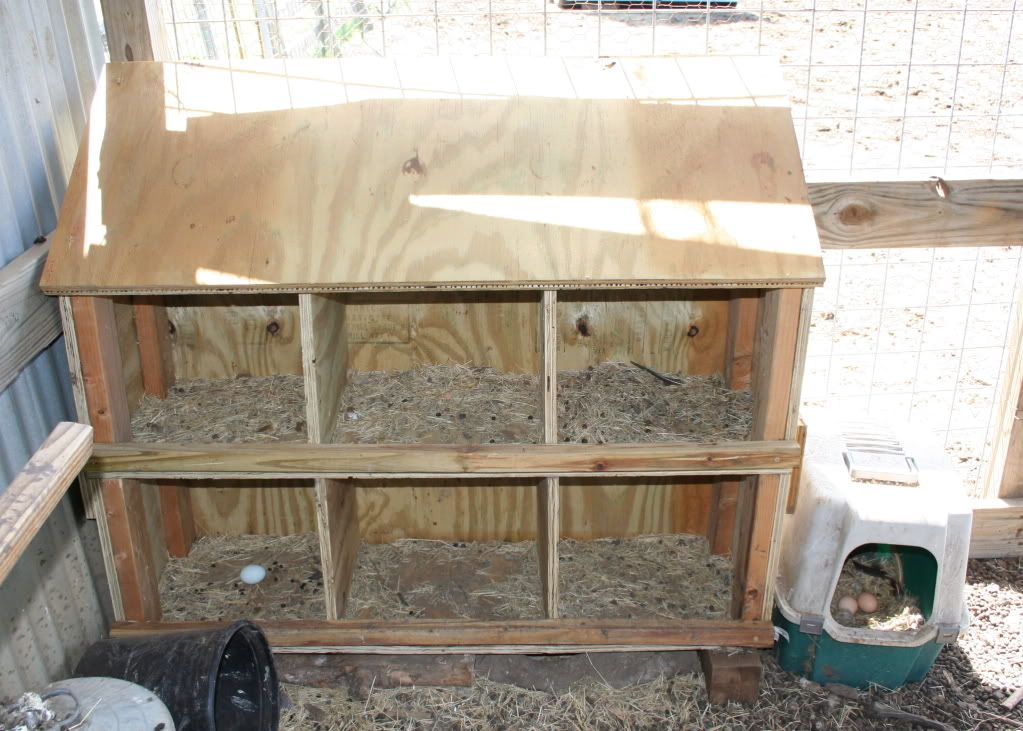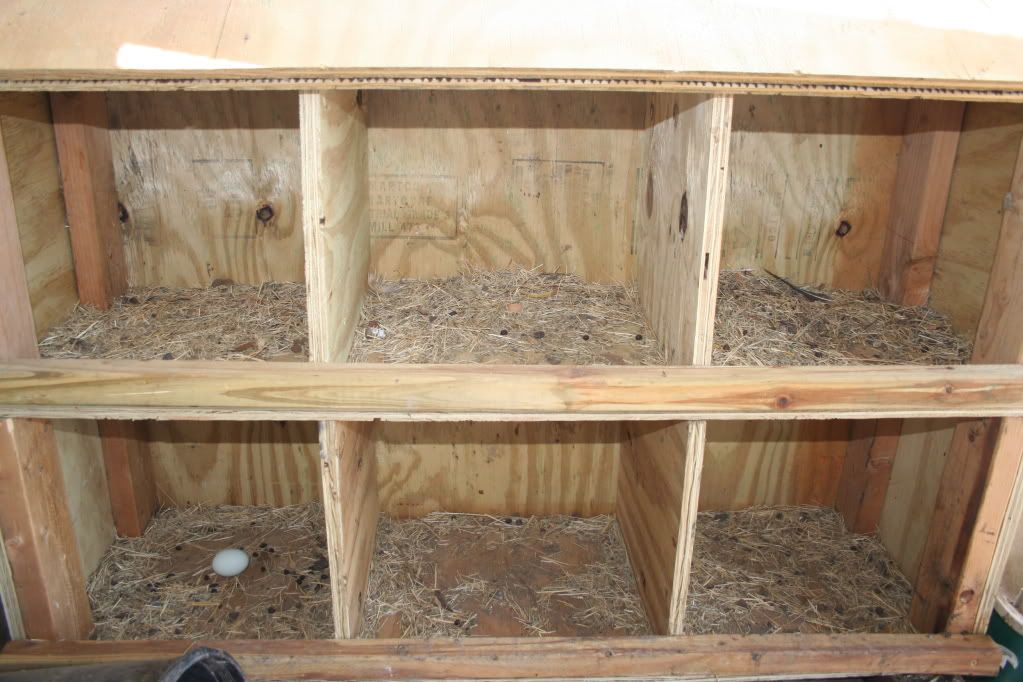When I first started keeping chickens, I used 3 covered kitty liter boxes as nesting boxes for the few hens that I had. Well, after a distressing incident with a pair of killer raccoons(that I eventually managed to trap and destroy), I went a little overboard and ended up with 24 hens. Most of them were only a month or two old, so they weren't laying yet, so I wasn't too worried about having more nesting boxes right away. However, this spring, they are all old enough to start laying (except for the one who turned out to be a rooster) and I really needed nesting boxes. So I designed a set of nesting boxes and dragooned my husband into helping me build them.
After building stalls for both Ziggy and Shadowfax, we had a fair amount of leftover wood. It was mostly 3/4 inch pressure treated plywood and a few pressure treated 2x4's. The plywood pieces were 4 feet long on the square sides and to minimize the number of cuts needed, I designed the nesting boxes to be 4 feet wide. Because of the limited amount of leftover wood and because I really only wanted 6 boxes, each of the boxes ended up being rather larger than average. Here is the design I came up with.
Once Foxfire got involved, he made it even sturdier. Because it was going to be really heavy when finished, we actually made it in two separate pieces and then joined them together and attached the back and roof once we had moved it all into the chicken coop. Here is the finished set of nesting boxes a couple of weeks after they were finished and put in place.
The entire setup was made using leftover materials except for the box of screws that we had to buy. Because the materials were originally intended for horse stalls, the nesting boxes are industrial size and industrial strength. As you can see, only one hen (probably one of the young ones) is using the new nesting boxes.
We usually find several eggs in the one remaining cat litter box.
The other two boxes had pretty much fallen apart, so we got rid of them, but we left the one decent litter box next to the new nesting boxes in the hope that it would help the hens transition to the new boxes. Sadly, it doesn't seem to be working. I suppose I should remove the litter box and hopefully, the hens will start using the new boxes, but most likely, they would just find new and harder to find places to lay their eggs. Oh well. I suppose we'll eventually see what happens.
Wednesday, March 24, 2010
Subscribe to:
Post Comments (Atom)





No comments:
Post a Comment